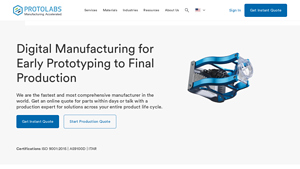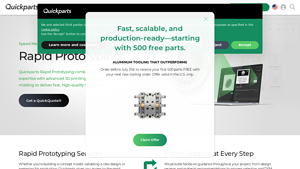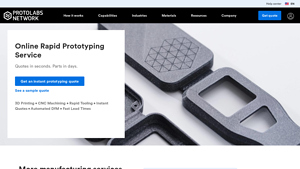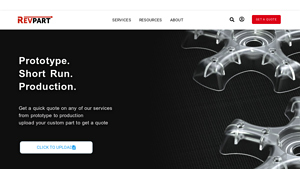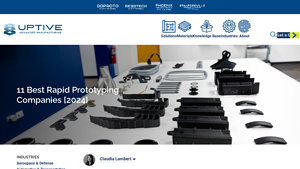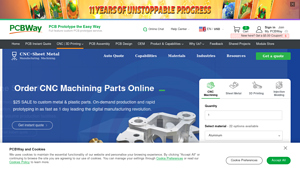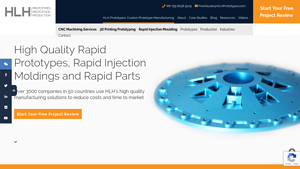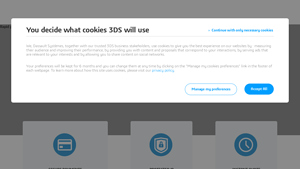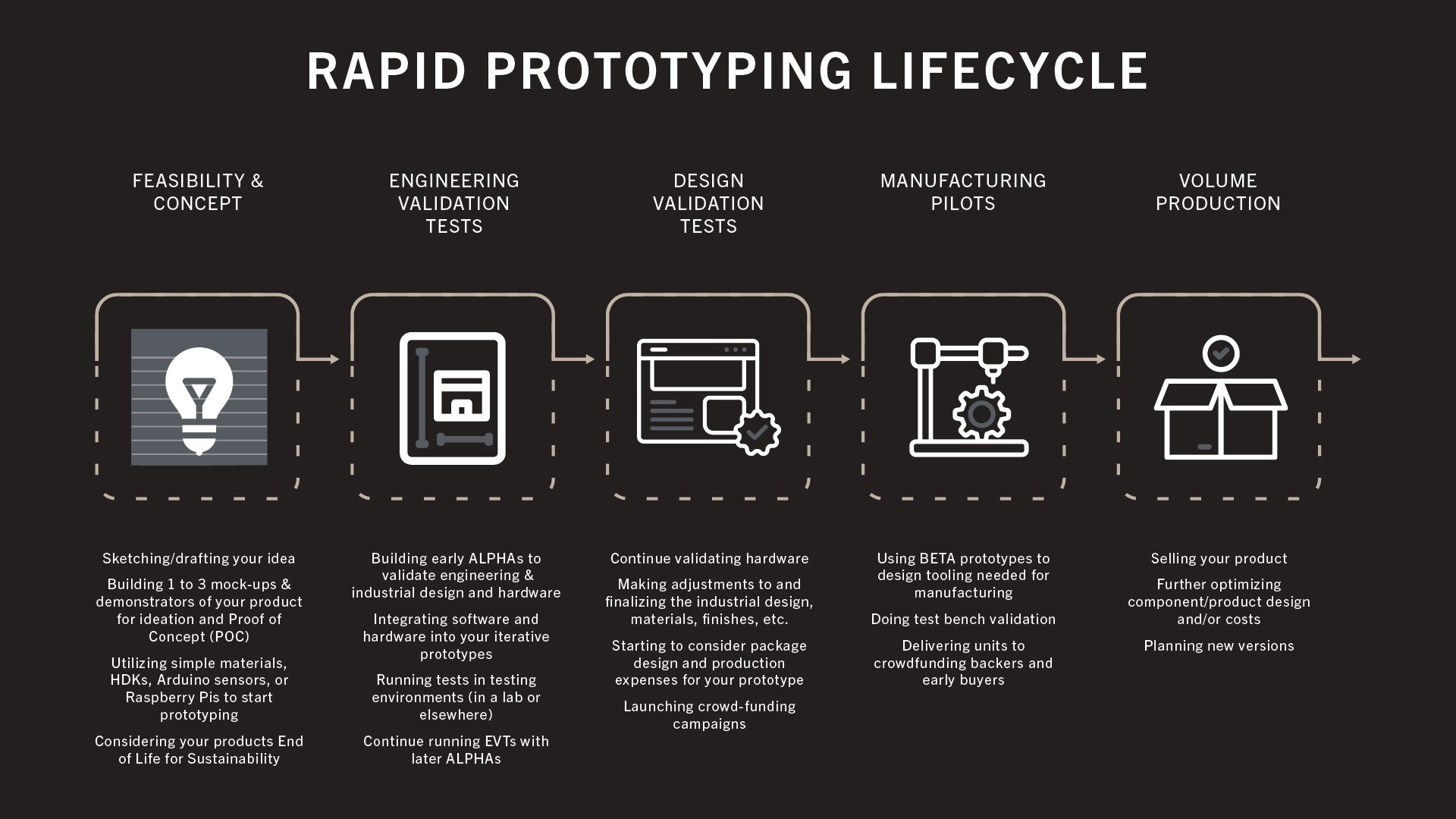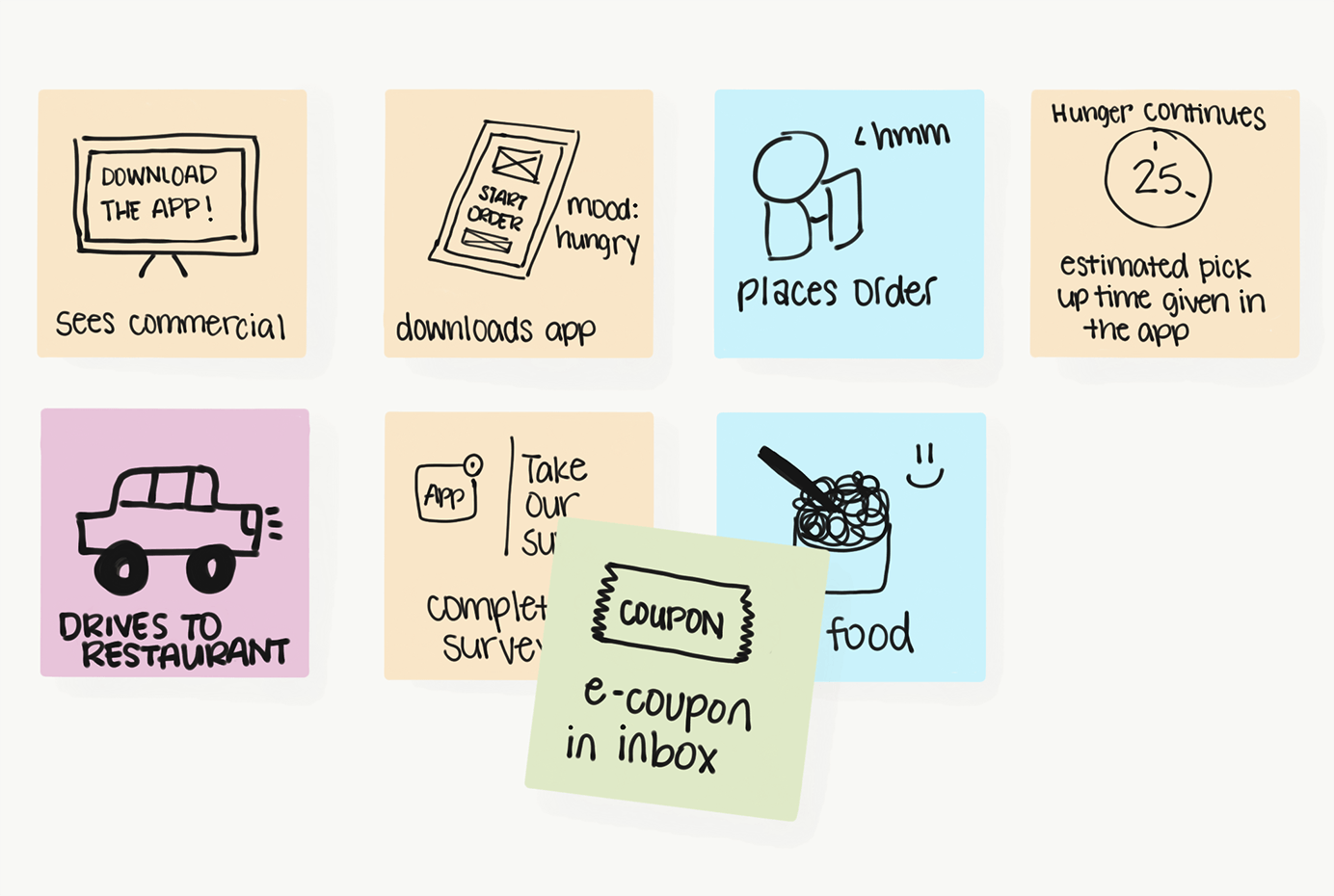Top 8 Rapid Prototype Service List and Guide
Top 8 Rapid Prototype Service Manufacturers & Suppliers List
1. Protolabs – Rapid Prototyping & On-Demand Production
Domain: protolabs.com
Registered: 2006 (19 years)
Introduction: Protolabs offers a range of rapid prototyping and on-demand production services including: 1. Injection Molding: Affordable, high-quality molded parts with low-volume molding up to 100,000+ parts, no minimum order quantity (MOQ) required, and over 100 materials available. 2. CNC Machining: Machined parts available in as fast as 1 day, with tolerances down to ±0.001 in. and optional plating and ano…
2. Quickparts – Rapid Prototyping Services
Domain: quickparts.com
Registered: 1997 (28 years)
Introduction: Quickparts offers expert rapid prototyping services combining over 35 years of manufacturing expertise with advanced technologies such as 3D printing, CNC machining, and rapid injection molding. Their in-house capabilities include:
– **3D Printing**: Supports complex geometries and fine details for concept models and functional prototypes, with a wide range of materials and resolutions.
– **Rapid…
3. Hubs – Rapid Prototyping Service
Domain: hubs.com
Registered: 1998 (27 years)
Introduction: Rapid Prototyping Service offers instant quotes and online ordering for various manufacturing technologies. Key features include:
– **Manufacturing Technologies:** 3D Printing (FDM, SLA, SLS, MJF), CNC Machining, Sheet Metal Fabrication, Injection Molding.
– **Instant Quotes:** Quotes are generated in seconds and update in real-time as production parameters are adjusted.
– **Lead Times:** Fast le…
4. RevPart – Rapid Prototyping & Manufacturing Services
Domain: revpart.com
Registered: 2014 (11 years)
Introduction: RevPart offers a range of rapid prototyping and manufacturing services including: 1. **Plastic Injection Molding** – Suitable for prototype, low-volume, and high-volume molds, with the ability to scale from low-volume to production. Molds can be produced in as little as 10 days. 2. **Custom Silicone Molding** – Details not specified in the text. 3. **Urethane Casting** – Ideal for prototyping and …
5. UPTIVE Advanced Manufacturing – Key Product
Domain: uptivemfg.com
Registered: 2023 (2 years)
Introduction: Key product details include: 1. UPTIVE Advanced Manufacturing – Offers rapid prototyping solutions including 3D printing, CNC machining, sheet metal fabrication, injection molding, and post-processing. Technologies used: Direct Metal Laser Sintering (DMLS), Selective Laser Sintering (SLS), Fused Deposition Modeling (FDM), Stereolithography (SLA), HP Multi Jet Fusion (MJF), PolyJet (PJP). 2. Xometr…
6. PCBWay – CNC Machining & 3D Printing Services
Domain: pcbway.com
Registered: 2012 (13 years)
Introduction: CNC Machining Service: Includes CNC Milling, CNC Turning, and supports materials like Aluminum, Stainless Steel, Brass, Copper, Titanium, and various plastics. 3D Printing Service: Offers technologies such as SLA, DLP, FDM, SLM, SLS, PolyJet, and Vacuum Casting, with materials including various plastics and metals. Sheet Metal Fabrication: Provides laser cutting and bending services, with capabili…
7. HLH Prototypes – Rapid Prototype Manufacturing Solutions
Domain: hlhprototypes.com
Registered: 2012 (13 years)
Introduction: HLH Prototypes specializes in Rapid Prototype Manufacturing Services, offering a range of solutions including: CNC Machining Services, 3D Printing (SLA, SLS, FDM, DMLS, Projet MJP), Rapid Injection Moulding, Carbon Fiber 3D Printing, Sheet Metal Work, Vacuum Casting, Aluminum Forging, and Die Casting. They cater to various industries such as Aerospace & UAV, Automotive, Telecommunications, Consume…
8. Dassault Systèmes – Rapid Prototyping Services
Domain: 3ds.com
Registered: 1995 (30 years)
Introduction: Rapid Prototyping Service by Dassault Systèmes 3DEXPERIENCE Make offers online rapid prototyping services for engineers needing quick and cost-effective product design iterations. Key features include: secure payments, protected IP, and instant quotes for 3D printing and CNC machining. The service connects users with a network of over 130 industrial rapid prototyping service providers primarily in…
Introduction: Navigating the Global Market for rapid prototype service
In today’s fast-paced global market, sourcing reliable rapid prototype services can be a daunting challenge for B2B buyers, especially in regions like Africa, South America, the Middle East, and Europe. The pressure to innovate and bring products to market quickly necessitates a deep understanding of the various rapid prototyping techniques available, from 3D printing to CNC machining. This guide is designed to equip international buyers with the knowledge needed to navigate the complexities of rapid prototyping, addressing critical aspects such as the types of services offered, their applications across industries, and strategies for supplier vetting.
As you delve into this comprehensive resource, you will discover how to effectively assess the capabilities of potential suppliers, understand cost structures, and identify the best materials and processes for your specific needs. The guide also highlights the importance of speed and efficiency in the prototyping phase, which can significantly reduce time-to-market and enhance competitive advantage. By empowering you with actionable insights and best practices, this guide aims to facilitate informed purchasing decisions that align with your business objectives and operational requirements. Whether you are in Saudi Arabia, Nigeria, or elsewhere, understanding the landscape of rapid prototyping services is crucial for driving innovation and ensuring your projects succeed in an increasingly competitive environment.
Understanding rapid prototype service Types and Variations
| Type Name | Key Distinguishing Features | Primary B2B Applications | Brief Pros & Cons for Buyers |
|---|---|---|---|
| 3D Printing | Utilizes additive manufacturing; quick turnaround; cost-effective | Prototyping, product testing, low-volume parts | Pros: Fast, affordable, versatile. Cons: May lack strength for functional parts. |
| CNC Machining | Subtractive process; high precision; suitable for complex geometries | Functional prototypes, tooling, fixtures | Pros: High accuracy, material versatility. Cons: Longer lead times, higher costs. |
| Injection Molding | Produces high-volume parts; requires mold creation; scalable | Mass production, consumer goods, automotive | Pros: Cost-effective for large runs. Cons: High initial setup costs, longer lead times. |
| Sheet Metal Fabrication | Involves cutting, bending, and assembling metal sheets | Enclosures, brackets, industrial components | Pros: Durable, suitable for structural parts. Cons: Limited to sheet materials, setup time. |
| Low Volume Production | Combines rapid prototyping with small-scale manufacturing | Market testing, pilot runs, specialty items | Pros: Reduces risk, fast market entry. Cons: May not be suitable for large-scale production. |
What are the Characteristics of 3D Printing in Rapid Prototyping?
3D printing is a widely adopted rapid prototyping method that leverages additive manufacturing techniques to create parts from digital models. It is characterized by its ability to produce complex geometries quickly and at a low cost, making it ideal for prototyping and testing. This method is particularly suitable for startups and small businesses looking to iterate designs without substantial financial risk. Key B2B purchasing considerations include the material options available, the desired finish quality, and the specific application requirements, as certain materials may not meet functional testing standards.
How Does CNC Machining Stand Out in Rapid Prototyping?
CNC machining is a subtractive manufacturing process that excels in creating high-precision parts from various materials, including metals and plastics. Its key distinguishing feature is the ability to produce complex geometries with tight tolerances, making it suitable for functional prototypes and tooling. Businesses often prefer CNC machining for applications where accuracy is paramount. When considering CNC services, buyers should evaluate the lead times, costs, and the specific tolerances required for their projects, as these factors can significantly impact overall project timelines.
Why Choose Injection Molding for Prototyping?
Injection molding is a rapid prototyping option that allows for the production of high-volume parts. It involves creating molds, which can be a significant upfront investment. However, once the molds are made, the cost per part decreases dramatically, making it an attractive option for mass production. This service is particularly beneficial for companies in industries such as automotive and consumer goods. Buyers should consider the initial mold costs, the lead times for mold creation, and the expected production volume when opting for injection molding services.
What are the Advantages of Sheet Metal Fabrication in Prototyping?
Sheet metal fabrication is a rapid prototyping method that involves cutting, bending, and assembling metal sheets to create durable parts. This process is particularly useful for applications requiring structural integrity, such as enclosures and brackets. Its main advantages include the ability to produce robust components quickly and the versatility of material options. B2B buyers should assess the specific material types, the complexity of the designs, and the turnaround times when considering sheet metal fabrication for their projects.
How Does Low Volume Production Benefit Businesses?
Low volume production merges rapid prototyping with small-scale manufacturing, allowing businesses to test market viability before committing to larger production runs. This method is ideal for companies looking to validate product designs or enter niche markets with limited quantities. The primary advantages include reduced financial risk and expedited market entry, making it a strategic choice for many businesses. Buyers should consider their target market’s demand, production costs, and the potential for scaling up when exploring low volume production options.
Key Industrial Applications of rapid prototype service
| Industry/Sector | Specific Application of rapid prototype service | Value/Benefit for the Business | Key Sourcing Considerations for this Application |
|---|---|---|---|
| Automotive | Development of custom jigs and fixtures | Reduces manufacturing errors and assembly time | Ensure precision in CAD designs and material compatibility |
| Aerospace | Creation of complex component prototypes | Accelerates design validation and compliance testing | Focus on certifications (e.g., AS9100) and material specs |
| Consumer Electronics | Rapid iteration of product designs | Speeds up time-to-market for new gadgets | Seek suppliers with diverse prototyping methods and materials |
| Medical Devices | Prototyping of surgical instruments | Enhances functionality testing and regulatory approval | Verify compliance with health regulations and material safety |
| Industrial Equipment | Fabrication of machine parts and tools | Lowers costs of production and improves efficiency | Assess supplier capacity for low-volume production needs |
How is Rapid Prototype Service Used in the Automotive Sector?
In the automotive industry, rapid prototype services are essential for developing custom jigs and fixtures that streamline the assembly process. By creating 3D-printed tools from CAD drawings, manufacturers can significantly reduce errors during production. This method is particularly beneficial for international buyers who face challenges in logistics and cost management. It’s crucial for them to ensure that their CAD designs are precise and compatible with the materials used to prevent delays and additional costs.
What Role Does Rapid Prototyping Play in Aerospace Applications?
Aerospace applications often involve the creation of complex component prototypes that require rigorous testing for compliance with safety standards. Rapid prototyping allows engineers to validate designs quickly, facilitating faster iterations and adjustments. For B2B buyers in regions like the Middle East and Europe, sourcing from suppliers with aerospace certifications (like AS9100) is vital to ensure that the prototypes meet stringent regulatory requirements, which can vary significantly by region.
How Does Rapid Prototyping Accelerate Consumer Electronics Development?
In the fast-paced consumer electronics sector, rapid prototyping is pivotal for iterating product designs swiftly. Companies can produce functional prototypes to test new gadgets, which accelerates the time-to-market. B2B buyers, especially in emerging markets like South America and Africa, should prioritize suppliers that offer a range of prototyping methods and materials to cater to diverse product requirements. This flexibility can provide a competitive edge in a crowded marketplace.
What Benefits Does Rapid Prototyping Offer for Medical Device Development?
Rapid prototyping is increasingly utilized in the medical device industry for the design and testing of surgical instruments. This process enhances functionality testing and expedites the regulatory approval process. Buyers in this sector need to ensure that their prototypes comply with health regulations and that the materials used are safe for medical applications. Establishing relationships with suppliers experienced in medical prototyping can mitigate risks associated with compliance and product safety.
Why is Rapid Prototyping Important for Industrial Equipment Fabrication?
In industrial equipment manufacturing, rapid prototyping services are crucial for fabricating machine parts and tools efficiently. This approach not only reduces production costs but also improves overall operational efficiency. International buyers should consider suppliers’ capabilities for low-volume production, as this can significantly impact their ability to meet market demands without overcommitting to large-scale manufacturing. Evaluating a supplier’s production capacity and turnaround times will be essential for maintaining competitiveness in this sector.
3 Common User Pain Points for ‘rapid prototype service’ & Their Solutions
Scenario 1: Delays in Prototyping Lead to Market Setbacks
The Problem: For many B2B buyers, especially in fast-paced industries like technology and automotive, time is of the essence. Delays in receiving prototypes can result in missed market opportunities and increased development costs. Imagine a product manager in a tech firm who requires a prototype to showcase at an upcoming trade show. If the rapid prototype service fails to deliver on time due to unexpected production delays, the manager may need to delay the product launch, risking potential sales and damaging the company’s reputation.
The Solution: To mitigate the risk of delays, it is essential to partner with a rapid prototyping service that guarantees quick turnaround times. When sourcing a provider, look for companies that offer transparent timelines and have a proven track record of meeting deadlines. Request detailed production schedules and inquire about their capacity to handle urgent requests. Additionally, consider utilizing services that provide real-time tracking of your order. This proactive approach enables you to anticipate potential delays and make necessary adjustments, ensuring that you receive your prototypes on schedule.
Scenario 2: High Costs of Prototyping Affect Budget Constraints
The Problem: Cost overruns can be a significant concern for businesses, particularly startups and SMEs operating under tight budgets. A procurement officer might face the challenge of selecting a rapid prototyping service that delivers quality without breaking the bank. With many services charging high fees for advanced materials or complex designs, it can be difficult to justify expenditures while ensuring that the prototypes meet necessary specifications.
The Solution: To address budget constraints, buyers should prioritize services that offer transparent pricing models and a variety of material options. When requesting quotes, ask for detailed breakdowns of costs, including material, labor, and shipping. Look for companies that provide bulk pricing or discounts for multiple prototypes, as this can significantly reduce overall costs. Furthermore, consider using basic materials for initial prototypes to keep costs low, reserving more expensive materials for later iterations once the design has been validated. Engaging in thorough cost analysis and negotiating terms with the service provider can also result in more favorable pricing arrangements.
Scenario 3: Communication Gaps Lead to Design Flaws
The Problem: Effective communication is critical in the prototyping process. A design engineer may submit a CAD file to a rapid prototyping service, but if there is a lack of clarity or feedback, the resulting prototype may not meet the original specifications. This misalignment can lead to costly revisions and wasted resources, frustrating both the buyer and the service provider.
The Solution: To prevent communication issues, establish a collaborative relationship with the rapid prototyping service right from the initial stages. Utilize services that offer design for manufacturability (DFM) analysis, where experts can review your designs and provide feedback on potential issues before production begins. Implement regular check-ins and progress updates throughout the prototyping process to ensure alignment on expectations and requirements. Additionally, using a cloud-based project management tool can facilitate real-time communication, enabling teams to discuss changes and provide instant feedback on prototypes. This proactive approach minimizes the risk of design flaws and enhances overall project efficiency.
Strategic Material Selection Guide for rapid prototype service
What Are the Key Properties of Common Materials Used in Rapid Prototyping?
When selecting materials for rapid prototyping, it is crucial to understand their properties and how they align with the intended application. Here, we analyze four common materials used in rapid prototyping: PLA, ABS, Nylon, and Aluminum.
How Does PLA Perform in Rapid Prototyping Applications?
Polylactic Acid (PLA) is a biodegradable thermoplastic derived from renewable resources like corn starch. Its key properties include a low melting temperature (around 180-220°C), making it easy to print, and good rigidity, which is beneficial for prototypes requiring structural integrity.
Pros: PLA is cost-effective, environmentally friendly, and offers excellent surface finish, making it ideal for visual prototypes.
Cons: However, it has lower heat resistance and can deform under high temperatures, limiting its use in applications exposed to heat or mechanical stress.
Impact on Application: PLA is suitable for applications that do not require high durability or heat resistance, such as decorative items or non-functional prototypes.
Considerations for International Buyers: Buyers from regions like Africa and South America should ensure that PLA complies with local environmental regulations, as its biodegradable nature can be a selling point. Standards such as ASTM D6400 may be relevant.
What Are the Advantages and Disadvantages of Using ABS?
Acrylonitrile Butadiene Styrene (ABS) is widely used for its toughness and impact resistance. It has a higher melting point (around 220-260°C) compared to PLA, making it suitable for functional prototypes that require durability.
Pros: ABS is strong and can withstand higher temperatures, making it ideal for mechanical parts and assemblies.
Cons: The material can be more challenging to print due to warping and requires a heated bed during the printing process.
Impact on Application: ABS is ideal for prototypes that will be subjected to stress or require post-processing like sanding and painting.
Considerations for International Buyers: Buyers in the Middle East and Europe should consider compliance with safety standards such as EN 71 for toys or other specific industry standards.
Why Choose Nylon for Functional Prototypes?
Nylon is a versatile material known for its excellent tensile strength and flexibility. It is capable of withstanding high temperatures and has good chemical resistance, making it suitable for a variety of applications.
Pros: Its durability and resistance to wear make it an excellent choice for functional prototypes and parts that will undergo rigorous testing.
Cons: Nylon can be more expensive than other materials and may require specific printing conditions to avoid warping.
Impact on Application: Nylon is particularly effective for applications involving moving parts or components that need to endure friction.
Considerations for International Buyers: Buyers from regions with strict chemical compliance regulations, such as Europe, should ensure that the nylon used meets relevant standards like REACH.
When Is Aluminum the Best Choice for Prototyping?
Aluminum is often used in rapid prototyping for its high strength-to-weight ratio and excellent machinability. It can be used in both CNC machining and additive manufacturing processes.
Pros: Aluminum offers superior durability and is suitable for high-performance applications, making it a preferred choice for industries like aerospace and automotive.
Cons: The cost of aluminum is higher than plastic materials, and machining processes can be complex and time-consuming.
Impact on Application: Aluminum is ideal for prototypes that require structural integrity and can be subjected to high stress and temperature variations.
Considerations for International Buyers: Buyers in regions like Saudi Arabia and Nigeria should ensure compliance with ISO standards for aluminum products, which can affect material sourcing and quality assurance.
Summary Table of Material Selection for Rapid Prototyping
| Material | Typical Use Case for rapid prototype service | Key Advantage | Key Disadvantage/Limitation | Relative Cost (Low/Med/High) |
|---|---|---|---|---|
| PLA | Visual prototypes, decorative items | Environmentally friendly, easy to print | Low heat resistance | Low |
| ABS | Mechanical parts, assemblies | Toughness, higher heat resistance | Warping during printing | Medium |
| Nylon | Functional prototypes, moving parts | High durability, chemical resistance | Higher cost, specific printing conditions | High |
| Aluminum | High-performance applications, structural prototypes | Superior strength-to-weight ratio | Higher cost, complex machining | High |
This strategic material selection guide provides insights into the properties, advantages, and considerations for international B2B buyers, enabling informed decisions in the rapid prototyping process.
In-depth Look: Manufacturing Processes and Quality Assurance for rapid prototype service
What Are the Main Stages in the Manufacturing Process of Rapid Prototype Services?
The manufacturing process for rapid prototyping typically consists of several key stages: material preparation, forming, assembly, and finishing. Each stage plays a critical role in ensuring the quality and functionality of the prototype.
How is Material Prepared for Rapid Prototyping?
Material preparation is foundational to the manufacturing process. Depending on the chosen method—be it 3D printing, CNC machining, or injection molding—different materials such as plastics, metals, or composites may be used. Suppliers often employ advanced software to convert CAD drawings into machine-ready formats. The choice of material is guided by the intended function of the prototype, with considerations for mechanical properties, thermal resistance, and aesthetic appeal. Additionally, suppliers should ensure that materials meet necessary industry standards to guarantee performance and safety.
What Forming Techniques Are Commonly Used in Rapid Prototyping?
Forming techniques vary significantly based on the manufacturing method selected. For 3D printing, techniques like Fused Deposition Modeling (FDM) or Stereolithography (SLA) are prevalent. FDM involves extruding thermoplastic filaments layer by layer, while SLA uses ultraviolet light to cure liquid resin into solid parts. CNC machining, on the other hand, employs subtractive manufacturing by removing material from a solid block, allowing for high precision and tighter tolerances. Injection molding is suitable for creating complex geometries in high volumes, where molten material is injected into molds. Each technique has its advantages and limitations, and selecting the right one is crucial for achieving the desired prototype specifications.
How Does Assembly Fit into the Rapid Prototyping Process?
Assembly is a vital stage where different components of the prototype are brought together. This may involve manual or automated processes, depending on the complexity of the assembly. For intricate designs, suppliers may use jigs and fixtures to ensure accurate alignment and assembly. It is essential for B2B buyers to inquire about the supplier’s assembly capabilities, especially for prototypes that require multiple parts to function correctly. Effective assembly techniques can significantly reduce the time to market and improve prototype performance.
What Finishing Processes Are Important for Prototypes?
Finishing processes enhance both the aesthetics and functionality of prototypes. Common finishing techniques include sanding, polishing, painting, and coating. These processes not only improve the visual appeal but can also impart specific characteristics, such as corrosion resistance or improved surface finish for better fit and function. It’s advisable for buyers to discuss available finishing options with suppliers to ensure that the final product meets the project requirements.
What International Standards and Quality Assurance Measures Should B2B Buyers Consider?
Quality assurance (QA) is paramount in rapid prototyping, particularly for international B2B transactions. Adhering to internationally recognized standards like ISO 9001:2015 ensures that the manufacturing processes and quality management systems are robust and reliable. ISO 9001 sets the criteria for a quality management system, emphasizing continuous improvement and customer satisfaction. In addition, industry-specific certifications such as CE marking for European products or API certification for the oil and gas sector may be required depending on the application.
What Are the Key Quality Control Checkpoints in the Manufacturing Process?
Quality control (QC) checkpoints are established to monitor the quality at various stages of production. These checkpoints typically include:
- Incoming Quality Control (IQC): Inspection of raw materials upon arrival to ensure they meet specified standards.
- In-Process Quality Control (IPQC): Continuous monitoring during the manufacturing process to catch defects early.
- Final Quality Control (FQC): Comprehensive testing of the finished product to ensure it meets all specifications before shipping.
Implementing these checkpoints allows for early detection of issues, minimizing waste and ensuring high-quality outcomes.
How Can B2B Buyers Verify a Supplier’s Quality Control Processes?
B2B buyers can take several steps to verify a supplier’s QC processes. One effective method is conducting audits, where buyers visit the supplier’s facilities to assess their quality management systems and production processes firsthand. Additionally, requesting detailed QC reports, which outline inspection results and compliance with international standards, can provide valuable insights.
Third-party inspections are another option for buyers seeking an unbiased evaluation of a supplier’s quality practices. Engaging an independent organization to review the supplier’s processes can help ensure that the products meet the required standards. Buyers should also inquire about the supplier’s history of quality incidents and how they have addressed any issues to better understand their commitment to maintaining high standards.
What Are the Quality Assurance Nuances for International B2B Buyers from Diverse Regions?
For B2B buyers in regions such as Africa, South America, the Middle East, and Europe, understanding regional nuances in quality assurance is vital. Different regions may have varying compliance requirements, particularly in industries like pharmaceuticals or aerospace. Buyers should familiarize themselves with local regulations and standards that may apply to their products.
Moreover, cultural differences can influence the perception of quality and business practices. Building strong relationships with suppliers and maintaining clear communication about quality expectations can help bridge these gaps. It’s also beneficial for buyers to consider partnering with suppliers who have experience in international markets, as they are more likely to understand and navigate these complexities effectively.
Conclusion
The manufacturing processes and quality assurance measures in rapid prototyping are critical for ensuring that prototypes meet both functional and aesthetic requirements. By understanding the main stages of manufacturing, the importance of quality control, and how to verify supplier practices, B2B buyers can make informed decisions that lead to successful product development and market entry. Investing time in assessing suppliers and their quality systems will ultimately contribute to a more efficient and effective prototyping experience.
Practical Sourcing Guide: A Step-by-Step Checklist for ‘rapid prototype service’
To successfully procure rapid prototype services, it is essential to follow a systematic approach that ensures you select a supplier capable of meeting your specific needs. This checklist is designed to guide international B2B buyers through the critical steps of the sourcing process, enabling you to make informed decisions and achieve optimal results.
Step 1: Define Your Technical Specifications
Clearly outline the technical requirements of your project, including dimensions, materials, and tolerances. This step is crucial as it helps suppliers understand your needs and provide accurate quotes. Consider creating a detailed document that includes CAD files and any relevant design notes to facilitate effective communication.
Step 2: Research Available Rapid Prototyping Technologies
Understand the various rapid prototyping methods available, such as 3D printing, CNC machining, and injection molding. Each technology has its advantages and is suited for different applications. For instance, 3D printing is ideal for complex geometries and rapid iterations, while CNC machining offers high precision for functional parts.
Step 3: Evaluate Potential Suppliers
Before making a commitment, conduct thorough evaluations of potential suppliers. Request company profiles, case studies, and references from clients within similar industries or geographical regions. This vetting process is essential for assessing a supplier’s reliability, capabilities, and past performance.
- Check for Expertise: Ensure the supplier has experience in your specific industry.
- Review Portfolio: Analyze their previous work to gauge quality and innovation.
Step 4: Verify Supplier Certifications
Confirm that the suppliers hold relevant certifications, such as ISO 9001 or AS9100, which signify adherence to quality management standards. Certifications can also indicate a commitment to continuous improvement and customer satisfaction, making them a key consideration in your supplier selection.
- Ask for Documentation: Request copies of certifications and quality control processes.
- Evaluate Compliance: Ensure they meet industry-specific regulations and standards.
Step 5: Request Quotes and Compare Costs
Obtain detailed quotes from multiple suppliers to understand the cost implications of your project. Ensure that each quote includes a breakdown of costs for materials, labor, and any additional services. Comparing these quotes will help you identify the best value for your investment.
- Inquire About Volume Pricing: Ask if discounts are available for larger orders.
- Consider Total Cost of Ownership: Factor in potential long-term costs, such as maintenance and support.
Step 6: Assess Lead Times and Production Capabilities
Discuss lead times and the supplier’s capacity to meet your deadlines. Rapid prototyping is valued for its speed, so ensure that the supplier can deliver prototypes in a timeframe that aligns with your project schedule.
- Evaluate Scalability: Confirm if they can support low-volume production or rapid iterations as needed.
- Understand Production Processes: Gain insights into their manufacturing workflow to anticipate any potential delays.
Step 7: Establish Communication and Support Channels
Ensure there are clear communication channels in place for project updates and support. Effective communication is vital for addressing any issues that may arise during the prototyping process.
- Designate Contacts: Have specific points of contact on both sides for seamless communication.
- Utilize Project Management Tools: Consider using collaborative tools to track progress and facilitate discussions.
Following this checklist will help you navigate the complexities of sourcing rapid prototype services, ensuring you select a supplier that aligns with your project goals and business objectives.
Comprehensive Cost and Pricing Analysis for rapid prototype service Sourcing
What Are the Key Cost Components in Rapid Prototype Service Sourcing?
Understanding the cost structure of rapid prototyping services is crucial for B2B buyers, especially when aiming for cost efficiency. The primary cost components include materials, labor, manufacturing overhead, tooling, quality control (QC), logistics, and profit margins.
-
Materials: The choice of materials significantly impacts costs. Common options like plastics and metals vary in price; for instance, high-performance materials may incur a premium. Cost-effective alternatives can be explored for lower-stakes prototypes.
-
Labor: Skilled labor is essential for precision in rapid prototyping. Labor costs can vary widely based on the complexity of the project and the region. For example, labor might be more cost-effective in regions with lower wage expectations, but this could impact quality.
-
Manufacturing Overhead: This includes the costs associated with running the production facility, such as utilities and equipment maintenance. Efficient facilities that leverage advanced technologies can reduce overhead, translating to lower prices for buyers.
-
Tooling: While rapid prototyping often minimizes the need for extensive tooling, certain projects may require custom jigs or fixtures, which can add to the initial cost.
-
Quality Control (QC): Ensuring prototypes meet specific standards can involve additional testing and inspection, affecting overall pricing. Certifications like ISO 9001 can add value but may also increase costs.
-
Logistics: Shipping costs are particularly relevant for international buyers. Factors like distance, shipping method, and customs duties can significantly affect the total cost.
-
Margin: Suppliers typically include a profit margin in their pricing, which can vary based on the competitive landscape and service differentiation.
How Do Pricing Influencers Affect Rapid Prototyping Costs?
Several factors influence pricing beyond the basic cost components. These include volume, specifications, customization, materials, quality certifications, supplier reliability, and Incoterms.
-
Volume/MOQ: Bulk orders can lead to lower prices per unit due to economies of scale. Many suppliers offer discounts for higher volumes, so negotiating minimum order quantities (MOQs) can be beneficial.
-
Specs and Customization: Highly customized designs or specifications can increase costs. It’s essential to balance the need for customization with budget constraints.
-
Materials and Quality Certifications: The choice of material impacts not only the initial costs but also the quality and performance of the prototype. Suppliers with recognized quality certifications may charge more but provide assurance of product reliability.
-
Supplier Factors: The supplier’s reputation, experience, and technological capabilities can influence pricing. Established suppliers with advanced capabilities may justify higher prices through faster turnaround times and better quality assurance.
-
Incoterms: Understanding shipping terms is critical for international buyers. Incoterms dictate the responsibilities of buyers and sellers in shipping and can significantly affect total costs, including insurance and customs clearance.
What Negotiation and Cost-Efficiency Tips Should International Buyers Consider?
For international buyers, particularly from regions like Africa, South America, the Middle East, and Europe, several strategies can enhance cost efficiency:
-
Negotiate Pricing: Leverage competition among suppliers to negotiate better terms. Request quotes from multiple providers and explore options for discounts based on volume or long-term partnerships.
-
Evaluate Total Cost of Ownership (TCO): Beyond initial costs, consider the TCO, which includes maintenance, support, and potential rework costs. Opt for suppliers that offer comprehensive solutions to minimize future expenses.
-
Understand Pricing Nuances: Prices can vary significantly based on geographical factors. Buyers in regions with higher logistical costs should factor this into their budgeting and consider local suppliers to mitigate expenses.
-
Be Informed About Market Trends: Stay updated on industry trends and material costs. This knowledge can aid in making informed decisions and negotiating effectively.
Conclusion: What Should Buyers Keep in Mind?
While prices for rapid prototyping services can vary widely, understanding the underlying cost structure and influencing factors can empower buyers to make informed decisions. It’s advisable to approach sourcing with a clear understanding of budget constraints and requirements while remaining flexible to negotiate terms that align with business objectives. Always remember that indicative prices can fluctuate based on market conditions, so staying agile is essential in this dynamic landscape.
Alternatives Analysis: Comparing rapid prototype service With Other Solutions
Exploring Alternatives to Rapid Prototyping Services
In the realm of product development, rapid prototyping services stand out for their speed and efficiency in bringing concepts to life. However, B2B buyers should consider various alternatives that can also meet their prototyping and production needs. This section compares rapid prototyping with two viable alternatives: traditional manufacturing and 3D printing. By examining these options, businesses can make informed decisions that align with their operational goals.
| Comparison Aspect | Rapid Prototype Service | Traditional Manufacturing | 3D Printing |
|---|---|---|---|
| Performance | High speed; quick iterations and feedback | Slower; longer lead times for tooling | Varies; fast for simple designs, slower for complex |
| Cost | Generally low for low volumes | High initial setup costs; economies of scale reduce per-unit cost | Lower for low volume; cost increases with complexity |
| Ease of Implementation | User-friendly with online quote systems | Complex; requires extensive planning | Simple; design files can be uploaded directly |
| Maintenance | Minimal; mostly software updates | High; machinery and tooling upkeep | Low; mainly involves software and printer maintenance |
| Best Use Case | Rapid development cycles for testing prototypes | High-volume production with established designs | Custom parts and low-volume runs |
What Are the Pros and Cons of Traditional Manufacturing?
Traditional manufacturing involves established processes such as injection molding, CNC machining, and assembly line production. The primary advantage is the ability to produce large quantities of products with consistent quality, making it ideal for companies that have finalized their designs and are ready to scale production. However, the initial investment in tooling and setup can be significant, and the lead times can be lengthy. For businesses looking to enter the market quickly or test new ideas, traditional manufacturing may not be the best fit.
How Does 3D Printing Compare to Rapid Prototyping Services?
3D printing is a popular alternative to rapid prototyping due to its flexibility and capability to create complex geometries without the need for specialized tooling. It allows for quick iterations and customization, making it particularly useful for unique or small-batch products. However, while 3D printing can be cost-effective for simple designs, the costs can escalate for more intricate projects. Additionally, the material options may be limited compared to traditional manufacturing methods, which can affect the final product’s performance and quality.
Conclusion: How Should B2B Buyers Choose the Right Prototyping Solution?
When selecting a prototyping solution, B2B buyers should evaluate their specific needs, including project timelines, budget constraints, and production volume requirements. Rapid prototyping services are ideal for quick iterations and testing, while traditional manufacturing is suited for larger scale production. On the other hand, 3D printing offers flexibility for custom designs. By understanding the strengths and limitations of each method, buyers can align their choice with their strategic objectives, ensuring they maximize efficiency and minimize costs in their product development lifecycle.
Essential Technical Properties and Trade Terminology for rapid prototype service
What Are the Key Technical Properties of Rapid Prototype Services?
When engaging in rapid prototyping, understanding the technical specifications is crucial for effective decision-making and project success. Here are essential properties that B2B buyers should consider:
1. Material Grade
Material grade refers to the quality and type of materials used in the prototyping process. Common materials include thermoplastics, metals, and composite materials. Selecting the appropriate material grade is vital as it directly impacts the prototype’s performance, durability, and suitability for final production. For instance, high-grade materials can withstand rigorous testing, making them ideal for functional prototypes.
2. Tolerance
Tolerance defines the permissible limit of variation in a physical dimension. In rapid prototyping, tighter tolerances (e.g., ±0.001 inches) are crucial for ensuring that parts fit together correctly in assembly. Understanding tolerance levels is essential for B2B buyers, as it affects the prototype’s performance and the feasibility of mass production. Failure to specify the right tolerances can lead to costly adjustments later in the production cycle.
3. Layer Thickness
Layer thickness is the height of each layer deposited in additive manufacturing processes like 3D printing. Thinner layers typically yield smoother surfaces and finer details but may increase production time. Buyers must balance the need for detail with lead times and costs, making it essential to understand how layer thickness impacts both the prototype’s quality and the overall timeline of the project.
4. Build Volume
Build volume indicates the maximum dimensions of a prototype that can be produced in a single print or fabrication session. A larger build volume allows for the creation of bigger prototypes or multiple parts simultaneously, which can significantly reduce lead times. Understanding build volume helps B2B buyers assess the capabilities of rapid prototyping services and align them with their project requirements.
5. Surface Finish
Surface finish refers to the texture and quality of a prototype’s surface after fabrication. It can range from rough to polished finishes, impacting both aesthetics and functionality. A suitable surface finish is particularly important for parts that will be used in end-user applications, as it influences user experience and product perception. Buyers should consider the necessary surface finish for their prototypes to avoid additional post-processing costs.
What Are Common Trade Terms in Rapid Prototyping?
Familiarity with industry jargon can enhance communication and negotiation in rapid prototyping projects. Here are several key terms:
1. OEM (Original Equipment Manufacturer)
OEM refers to a company that produces parts or equipment that may be marketed by another company. In rapid prototyping, understanding whether your service provider is an OEM can help gauge their capabilities and reliability. OEMs often have established processes and quality controls, which can lead to better outcomes in prototype development.
2. MOQ (Minimum Order Quantity)
MOQ is the smallest quantity of a product that a supplier is willing to produce or sell. In rapid prototyping, knowing the MOQ helps buyers plan their budgets and production timelines. Some services may offer low MOQs for prototypes, which can be beneficial for businesses looking to test concepts before committing to larger production runs.
3. RFQ (Request for Quotation)
An RFQ is a document used by buyers to solicit price quotes from suppliers for specific products or services. In the context of rapid prototyping, submitting an RFQ allows buyers to compare costs and terms from multiple providers. Crafting a detailed RFQ can lead to more accurate quotes and better negotiation outcomes.
4. Incoterms
Incoterms (International Commercial Terms) are a set of rules that define the responsibilities of sellers and buyers in international transactions. Understanding Incoterms is essential for B2B buyers involved in cross-border rapid prototyping, as they outline who is responsible for shipping, insurance, and tariffs, helping to avoid misunderstandings.
5. DFM (Design for Manufacturability)
DFM is the practice of designing products in a way that makes them easier and more cost-effective to manufacture. Engaging in DFM discussions with your rapid prototyping partner can optimize designs for production efficiency, ultimately reducing costs and time-to-market.
By understanding these technical properties and trade terms, B2B buyers can make more informed decisions, enhance collaboration with suppliers, and ensure successful rapid prototyping outcomes.
Navigating Market Dynamics and Sourcing Trends in the rapid prototype service Sector
What Are the Global Drivers Shaping the Rapid Prototype Service Market?
The rapid prototype service market is currently experiencing significant growth, driven by the accelerating pace of product development across various industries. International B2B buyers, particularly those from regions like Africa, South America, the Middle East, and Europe, are increasingly adopting rapid prototyping services to shorten their time-to-market. The demand for faster and more cost-effective product development solutions is compelling companies to leverage advanced technologies such as 3D printing, CNC machining, and injection molding.
Emerging trends indicate a shift towards digital manufacturing processes, with an emphasis on automation and real-time collaboration tools. These technologies facilitate quicker iterations and enhance design flexibility, allowing companies to respond rapidly to market demands. Furthermore, the rise of low-volume production capabilities enables businesses to test products in smaller batches before scaling up, minimizing the financial risks associated with full-scale manufacturing.
Another key trend is the growing inclination towards integrated supply chain solutions. As B2B buyers seek streamlined processes, companies offering comprehensive services—from prototyping to final production—are becoming increasingly attractive. This integrated approach not only improves efficiency but also fosters long-term partnerships, crucial for navigating the complexities of global sourcing dynamics.
How Is Sustainability Influencing Sourcing Decisions in the Rapid Prototype Service Sector?
Sustainability has emerged as a critical consideration for international B2B buyers when sourcing rapid prototype services. Companies are becoming more aware of their environmental impact and are actively seeking suppliers that prioritize sustainable practices. This includes the use of eco-friendly materials, energy-efficient production methods, and waste reduction strategies.
Ethical sourcing is equally important, as buyers are increasingly concerned about the social implications of their supply chains. They are looking for partners that adhere to fair labor practices and demonstrate a commitment to corporate social responsibility. Certifications such as ISO 14001 (Environmental Management) and the use of ‘green’ materials can significantly influence sourcing decisions, providing buyers with assurance that their suppliers align with their sustainability goals.
Moreover, incorporating sustainable practices into rapid prototyping not only mitigates environmental risks but also enhances brand reputation. Companies that prioritize sustainability are often viewed more favorably by consumers, which can translate into competitive advantages in the marketplace.
What Is the Historical Context Behind Rapid Prototyping Services?
Rapid prototyping services have evolved significantly since their inception in the late 20th century. Initially, these services were limited to basic 3D printing technologies, primarily used for creating simple models. However, advancements in manufacturing technologies have transformed rapid prototyping into a sophisticated sector that supports a wide array of industries, including aerospace, automotive, and healthcare.
The introduction of various additive manufacturing techniques, such as Stereolithography (SLA) and Selective Laser Sintering (SLS), has expanded the capabilities of rapid prototyping, allowing for the creation of more complex geometries and functional prototypes. This evolution has made rapid prototyping an essential component of modern product development, enabling companies to innovate rapidly while minimizing costs and risks associated with traditional manufacturing methods.
As the market continues to grow, it is poised to play a crucial role in shaping the future of product design and development across global industries.
Frequently Asked Questions (FAQs) for B2B Buyers of rapid prototype service
-
How do I choose the right rapid prototyping service for my project?
Choosing the right rapid prototyping service involves assessing your specific project needs, such as material requirements, production speed, and budget. Research potential suppliers by examining their capabilities, past projects, and customer reviews. It’s also crucial to inquire about their technologies—like 3D printing or CNC machining—and whether they align with your design specifications. Consider engaging with their customer service team to discuss your project in detail and gauge their responsiveness and expertise. -
What types of materials can I use for rapid prototyping?
Rapid prototyping services offer a wide range of materials, including plastics, metals, and composites. Common choices include ABS, PLA, nylon for 3D printing, and aluminum or stainless steel for CNC machining. The selection depends on the prototype’s intended use—functional testing, aesthetic evaluation, or low-volume production. Discuss your requirements with potential suppliers to determine the most suitable material that meets your design and performance needs. -
What are the typical lead times for rapid prototyping projects?
Lead times can vary significantly based on the complexity of the design, the chosen materials, and the manufacturing process. Generally, rapid prototyping can take anywhere from a few days to a couple of weeks. For example, 3D printing can produce prototypes in as little as 1-3 business days, while CNC machining might take longer. Always confirm with your supplier about expected timelines and any potential delays due to factors like international shipping or material availability. -
Are there minimum order quantities (MOQs) for rapid prototyping services?
Most rapid prototyping services cater to low-volume production and typically do not impose strict minimum order quantities. You can often order as few as one prototype, especially for 3D printing. However, for certain processes like injection molding, suppliers may have MOQs, so it’s essential to clarify this during your initial discussions. This flexibility allows businesses to test designs before committing to larger production runs. -
What quality assurance measures should I expect from rapid prototyping services?
Reputable rapid prototyping services employ rigorous quality assurance (QA) protocols to ensure that prototypes meet specified standards. Look for suppliers that offer certifications, such as ISO 9001, which indicate adherence to quality management practices. Additionally, inquire about their inspection processes, material traceability, and whether they provide documentation such as inspection reports or material certifications to ensure the quality of your prototypes. -
How do I handle international shipping and logistics for prototypes?
When sourcing rapid prototyping services internationally, it’s crucial to discuss shipping options and logistics with your supplier. They should provide details on shipping methods, estimated delivery times, and costs. Understand customs regulations and potential tariffs that may apply to your shipment, especially when importing prototypes. It can be beneficial to work with suppliers experienced in international trade to streamline the shipping process and avoid unexpected delays. -
What payment terms should I expect when working with rapid prototyping suppliers?
Payment terms can vary widely among rapid prototyping suppliers. Many require upfront payments for small projects, while larger orders might allow for partial payments. It’s essential to clarify payment methods accepted (e.g., credit card, bank transfer) and inquire about any financing options. Additionally, discussing terms early on can help establish a solid partnership and ensure that both parties are aligned on expectations. -
Can I customize my prototypes, and how does the process work?
Yes, most rapid prototyping services offer customization options to fit your specific design requirements. The process typically begins with submitting your CAD files, after which the supplier may provide feedback on manufacturability and design improvements. During this phase, you can discuss material choices, finishes, and other specifications. Effective communication with your supplier is key to ensuring that the final prototype aligns with your vision and functional needs.
Important Disclaimer & Terms of Use
⚠️ Important Disclaimer
The information provided in this guide, including content regarding manufacturers, technical specifications, and market analysis, is for informational and educational purposes only. It does not constitute professional procurement advice, financial advice, or legal advice.
While we have made every effort to ensure the accuracy and timeliness of the information, we are not responsible for any errors, omissions, or outdated information. Market conditions, company details, and technical standards are subject to change.
B2B buyers must conduct their own independent and thorough due diligence before making any purchasing decisions. This includes contacting suppliers directly, verifying certifications, requesting samples, and seeking professional consultation. The risk of relying on any information in this guide is borne solely by the reader.
Strategic Sourcing Conclusion and Outlook for rapid prototype service
What Are the Key Takeaways for B2B Buyers in Rapid Prototyping?
In conclusion, the strategic sourcing of rapid prototype services presents a transformative opportunity for businesses aiming to innovate and accelerate product development. By leveraging advanced technologies such as 3D printing, CNC machining, and injection molding, companies can reduce lead times, minimize costs, and enhance product quality. The ability to iterate designs quickly allows for informed decision-making and mitigates the risks associated with bringing new products to market.
How Can International Buyers Enhance Their Sourcing Strategies?
For international B2B buyers, particularly in regions such as Africa, South America, the Middle East, and Europe, establishing partnerships with reliable rapid prototyping service providers is crucial. Emphasizing quality certifications, responsiveness, and the ability to support low-volume production can significantly influence sourcing decisions. Engaging with suppliers who offer comprehensive support throughout the product lifecycle ensures a more seamless transition from prototype to production.
What Does the Future Hold for Rapid Prototyping Services?
As the demand for rapid prototyping continues to grow, embracing innovative solutions and fostering strategic partnerships will be vital for businesses seeking to remain competitive. Now is the time for international buyers to explore the vast potential of rapid prototyping services to streamline their operations and enhance their product offerings. Take the next step in your product development journey—connect with a trusted rapid prototyping partner today to unlock new possibilities for your business.
